15CrMoG seamless steel pipes are a specialty steel widely used in high-pressure and high-temperature environments. Their excellent mechanical properties and heat resistance make them a key material in industries such as power generation, petrochemicals, and boiler manufacturing.
First, the material properties and chemical composition of 15CrMoG seamless steel pipes.
15CrMoG is a chromium-molybdenum alloy steel. Its nomenclature follows the national standard GB/T 5310: "15" represents a carbon content of approximately 0.15%, "Cr" and "Mo" denote the addition of chromium and molybdenum alloying elements, respectively, and the suffix "G" specifically designates boiler steel. Its typical chemical composition is: Carbon: 0.12%-0.18%, Silicon: 0.17%-0.37%, Manganese: 0.40%-0.70%, Chromium: 0.80%-1.20%, Molybdenum: 0.45%-0.60%, and the content of harmful elements such as sulfur and phosphorus is strictly controlled. This alloy design enables it to maintain high endurance and oxidation resistance even at temperatures of 500-550°C. Its room-temperature tensile strength can reach 440-640 MPa, and its yield strength is no less than 295 MPa.
Second, an analysis of the advanced production process for 15CrMoG seamless steel pipes.
15CrMoG seamless steel pipes are produced using hot rolling or cold drawing processes. The core processes include:
1. Billet heating: The continuously cast billet is heated to approximately 1200°C to ensure plastic deformation capability;
2. Piercing: The solid billet is formed into a hollow shell tube using a cross-rolling piercing mill;
3. Pipe stretching: Multiple rolling passes are performed on a continuous pipe mill to achieve the target wall thickness.
4. Sizing: The outer diameter accuracy is controlled to within ±0.8%-1.25%;
5. Heat treatment: The key heat treatment process is a normalizing (900-960°C) + tempering (650-730°C) heat treatment system. This process refines the grain size, eliminates internal stresses, and achieves optimal overall mechanical properties.
6. Nondestructive testing: 100% ultrasonic testing and eddy current testing are performed to ensure the absence of internal defects. Some high-pressure pipes also undergo a hydrostatic test (test pressure can reach 1.5-2 times the operating pressure).
Third, the Outstanding Performance Advantages of 15CrMoG Seamless Steel Pipes
Compared to ordinary carbon steel pipes, 15CrMoG seamless steel pipes offer three core advantages:
1. High-Temperature Strength: When used for a long time at 550°C, their sustained strength can reach 80-100 MPa, more than twice that of 20# steel.
2. Hydrogen Corrosion Resistance: The dense oxide film formed by chromium effectively resists corrosive media such as H₂S and CO₂.
3. Weldability: With a carbon equivalent (CE) controlled between 0.45% and 0.55%, high-quality welds can be achieved using preheating (150-200°C) and post-heating (250-300°C). A case study of a power plant's main steam pipeline demonstrates that the impact energy of the joint after post-weld heat treatment can reach over 70J.
Fourth, Core Applications of 15CrMoG Seamless Steel Pipes
1. Power Plant Boiler Systems: As the preferred material for main steam pipelines and headers, operating pressures typically exceed 17.5 MPa. Supercritical units utilize a large number of pipes with specifications such as Φ273×28mm.
2. Petrochemical equipment: Used in hydrogenation reactor pipelines, cracking unit oil transfer lines, and other applications. A refinery's hydrogenation unit uses Φ168×18mm steel pipes with a design life of 200,000 hours.
3. Nuclear power supporting systems: High-pressure water feed pipes for the conventional island of a second-generation upgraded nuclear power plant.
4. Special heat exchange equipment: Inlet and outlet pipelines for methylammonium pumps in high-pressure urea plants.
Fifth, the quality control system for 15CrMoG seamless steel pipes.
High-quality 15CrMoG steel pipes must comply with the GB5310-2023 "Seamless Steel Pipes for High-Pressure Boilers" standard. Key control points include:
- Grain size requirement: Grade 5-8
- Non-metallic inclusions ≤ Grade 2
- Hardness controlled between 135-195 HB
- Bend test bend diameter ≥ 3 times the pipe diameter
- No cracks at H = 0.7D in the flattening test
Sixth, the current market status and development trends of 15CrMoG seamless steel pipes.
In 2023, the annual domestic production of 15CrMoG seamless steel pipes will be approximately 800,000 tons. With the development of ultra-supercritical units towards temperatures exceeding 630°C, new and improved 15CrMoG pipes (with added V and Nb microalloys) are under development. In the international market, demand for ASTM A335 P12 and equivalent steel pipes is steadily increasing, with an annual trade volume of approximately 150,000 tons. Precautions for Use
1. Storage and Management: Avoid outdoor storage. Install plastic protective covers on pipe ends to prevent impact.
2. Installation Specifications: During cold bending, the bend radius should be no less than 3.5 times the pipe diameter.
3. Welding Tips: R307 welding rods are recommended, and the interpass temperature should be controlled between 200-300°C.
4. Service Life Monitoring: Regular hardness testing and metallographic examination are required in high-temperature service environments. Replacement should be considered if the hardness drops by 15% or if obvious pearlite spheroidization occurs.
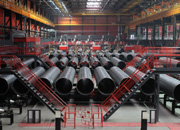 Threeway Steel is known as a professional supplier engaged in manufacturing and distributing a wide range of steel pipe, and our headquarter located the central part of China – Hunan and six associated factories throughout China.
Threeway Steel is known as a professional supplier engaged in manufacturing and distributing a wide range of steel pipe, and our headquarter located the central part of China – Hunan and six associated factories throughout China.
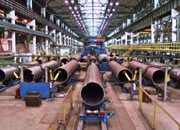 Threeway Steel is known as a professional supplier engaged in designing, manufacturing and distribution of a wide range of steel products with the headquarter located the central part of China – Hunan and six associated factories throughout China.
Threeway Steel is known as a professional supplier engaged in designing, manufacturing and distribution of a wide range of steel products with the headquarter located the central part of China – Hunan and six associated factories throughout China.
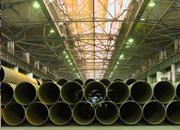 Threeway Steel is known as a professional supplier engaged in designing, manufacturing and distribution of a wide range of steel products with the headquarter located the central part of China – Hunan and six associated factories throughout China.
Threeway Steel is known as a professional supplier engaged in designing, manufacturing and distribution of a wide range of steel products with the headquarter located the central part of China – Hunan and six associated factories throughout China.
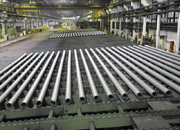 Threeway Steel is known as a professional supplier engaged in designing, manufacturing and distribution of a wide range of steel products with the headquarter located the central part of China – Hunan and six associated factories throughout China.
Threeway Steel is known as a professional supplier engaged in designing, manufacturing and distribution of a wide range of steel products with the headquarter located the central part of China – Hunan and six associated factories throughout China.
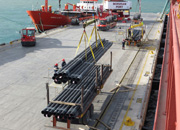 Threeway Steel is known as a professional supplier engaged in designing, manufacturing and distribution of a wide range of steel products with the headquarter located the central part of China – Hunan and six associated factories throughout China.
Threeway Steel is known as a professional supplier engaged in designing, manufacturing and distribution of a wide range of steel products with the headquarter located the central part of China – Hunan and six associated factories throughout China.

